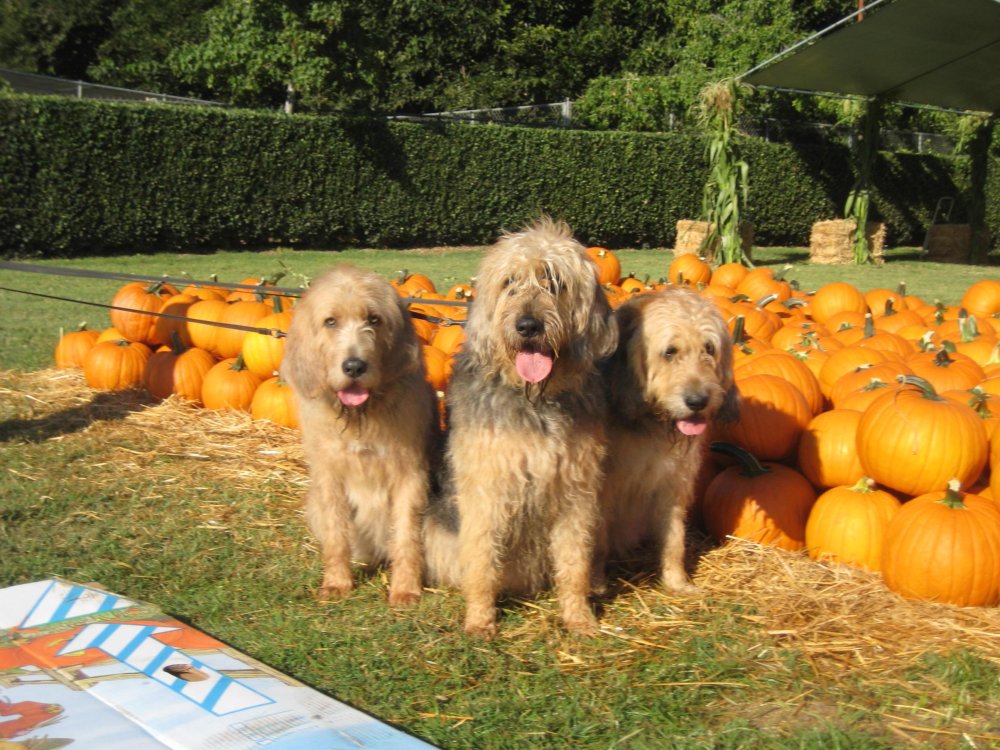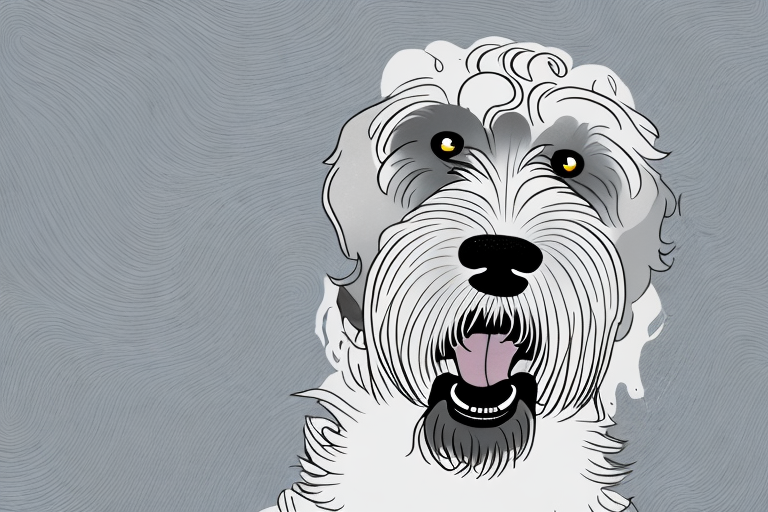- Breed Category: Hound Group
- Country of Origin: United Kingdom
- Average Height: Males 69 cm (27 in), Females 61 cm (24 in)
- Average Weight: Males 52 kg (115 lbs), Females 36 kg (80 lbs)
- Average Life Span: 10 to 13 years
- Grooming Requirements: Regular brushing, occasional trimming
- Exercise Requirements: High, needs daily exercise
- Coat Type: Dense, rough, and waterproof
- Coat Color Variations: Various, including grizzle, wheaten
- Shedding Level: Moderate
- Ear Type: Long and droopy
- Tail Type: Long and slightly curved
- Temperament: Friendly, affectionate, and independent
- Intelligence Level: Moderate
- Barking Tendency: Moderate
- Compatibility with Children: Good, generally patient
- Compatibility with Other Pets: Generally good with other dogs
- Training Ease: Can be stubborn, needs patience
- Common Health Issues: Hip dysplasia, bloat
- Dietary Needs: High-quality diet, watch weight
- Energy Level: High
- Drooling Tendency: High
- Sensitivity to Weather: Tolerates cold, less heat tolerant
- Overall Maintenance Level: Moderate to high
- Original Purpose: Hunting otters and other game
- Year of Recognition by Kennel Clubs: 1909
- Apartment Friendly: Not ideal, needs space
- Best Suited For: Active families, rural settings
- Cost of Ownership: Moderate to high
- Unique Traits: Webbed feet, excellent swimmers
Think all hounds are the same? The Otterhound might just surprise you. This unique breed, with its shaggy coat and webbed feet, was originally bred for hunting otters in medieval England. Today, they’re known for their friendly nature and distinctive appearance. Otterhounds are large, with a robust build and a keen sense of smell, making them excellent companions for those who love the outdoors. This article aims to delve into the fascinating history of the Otterhound, explore their charming characteristics, and provide insights into their care. Whether you’re considering adding one to your family or simply curious, understanding this breed will enrich your appreciation for these remarkable dogs.
History and Origin of the Otterhound

Early Development of the Breed
The Otterhound’s roots trace back to medieval England, where they were specifically bred for a unique purpose. With a lineage that likely includes Bloodhounds and various terriers, these dogs were crafted to excel in both water and land. Their webbed feet and dense, waterproof coat are not just for show; they were essential traits for their original role. The breed’s development was a careful process, aimed at creating a dog that could track and hunt otters with precision.
Role in Hunting and Otter Tracking
Otterhounds were indispensable to hunters, especially when otters were considered pests to fish stocks. Their exceptional sense of smell and stamina made them perfect for tracking otters over long distances. These dogs could follow a scent trail through water, a skill that set them apart from other hounds. Their ability to work tirelessly in challenging environments made them a favourite among hunters.
Key Historical Figures
Several key figures played a role in the Otterhound’s history. Notably, King John of England was known to have kept a pack of these hounds. Over the centuries, dedicated breeders have ensured the survival of this unique breed, preserving its distinct characteristics and hunting prowess. Their efforts have kept the Otterhound’s legacy alive, even as their original purpose has faded into history.
Physical Characteristics of the Otterhound

Appearance
The Otterhound is a large and impressive dog, standing between 61 to 69 centimetres tall at the shoulder and weighing anywhere from 36 to 54 kilograms. Their coat is a standout feature, with a rough, shaggy texture that comes in a variety of colours, including grizzle, wheaten, and black and tan. This dense, waterproof coat is not just for looks; it’s a practical feature that served them well in their original hunting days.
Distinctive Markings
Many Otterhounds sport distinctive markings that add to their unique charm. You might notice a mix of colours or a striking pattern that makes each dog truly one-of-a-kind. These markings, combined with their expressive eyes and large, floppy ears, give them an endearing and somewhat whimsical appearance.
Unique Physical Traits
One of the most fascinating traits of the Otterhound is their webbed feet. This feature, along with their powerful build, makes them excellent swimmers. Their rough coat, while charming, also provides protection against the elements, allowing them to thrive in various environments. These physical traits are a testament to their history and adaptability.
Temperament and Behaviour of the Otterhound

Typical Personality Traits
Otterhounds are known for their friendly and independent nature. They have a lively spirit and are often described as energetic and playful. This breed loves to explore and has a curious streak, making them great companions for outdoor adventures. Despite their independence, they are also affectionate and enjoy spending time with their human family.
Suitability as a Family Pet and Working Dog
As a family pet, the Otterhound is a wonderful choice. Their gentle and friendly disposition makes them great with children, and they often form strong bonds with their family members. They are also versatile working dogs, thanks to their keen sense of smell and stamina. Whether as a pet or a working companion, they bring joy and utility to any household.
Interaction with Children and Other Animals
Otterhounds generally get along well with children, thanks to their patient and tolerant nature. They are playful and can match the energy levels of kids, making them ideal playmates. When it comes to other animals, early socialisation is key. With proper introduction, they can coexist peacefully with other pets, although their hunting instincts might occasionally come into play.
Training and Exercise Needs of the Otterhound

Importance of Early Training and Socialisation
Getting an Otterhound off to a good start with early training and socialisation is crucial. These dogs are naturally curious and independent, so introducing them to various environments, people, and other animals early on helps shape a well-rounded adult dog. It’s all about setting the stage for a confident and adaptable companion.
Recommended Training Techniques
When it comes to training, positive reinforcement is the way to go. Otterhounds respond well to treats, praise, and play. Keep sessions short and engaging to hold their attention. Consistency is key, and patience will pay off as they learn commands and behaviours. Remember, they’re intelligent but can be a bit stubborn, so a gentle yet firm approach works best.
Daily Exercise Requirements and Activities They Enjoy
Otterhounds are active dogs that need plenty of exercise to stay happy and healthy. Aim for at least an hour of physical activity each day. They love long walks, swimming, and exploring new trails. Engaging their sense of smell with scent games or tracking exercises can also be a great way to keep them mentally stimulated.
Health and Lifespan of the Otterhound
Common Health Issues
Otterhounds, like many purebred dogs, can be prone to certain health issues. Hip dysplasia is a common concern, given their large size. They may also experience elbow dysplasia and bloat, a serious condition that requires immediate attention. Regular check-ups with a vet can help catch these issues early.
Average Lifespan and Health Tips
The average lifespan of an Otterhound is around 10 to 13 years. To keep them healthy, a balanced diet and regular exercise are essential. These dogs thrive on activity, so keeping them engaged with walks and playtime is crucial. Mental stimulation is just as important, so consider puzzle toys or scent games to keep their minds sharp.
Preventative Care Recommendations
Preventative care is key to a long, healthy life for your Otterhound. Regular vet visits for vaccinations and health screenings are a must. Dental care shouldn’t be overlooked either; brushing their teeth regularly can prevent dental disease. Keeping their ears clean and dry is also important, especially given their love for water.
Grooming and Maintenance of the Otterhound
Coat Care and Grooming Routines
The Otterhound’s coat is a defining feature, with its rough, shaggy texture that requires regular attention. A weekly brush is essential to prevent matting and to keep their coat looking its best. Use a slicker brush or a comb to work through any tangles, especially around the ears and tail. Regular grooming not only keeps them looking good but also helps in bonding with your furry friend.
Shedding and Seasonal Grooming Tips
Otterhounds do shed, particularly during seasonal changes. During these times, more frequent brushing can help manage the shedding and keep your home a bit tidier. A good bath every couple of months will also help maintain their coat’s health and shine. Just be sure to use a dog-friendly shampoo to avoid skin irritation.
Remember, grooming is more than just a beauty routine; it’s an opportunity to check for any skin issues or parasites. Regular grooming sessions will ensure your Otterhound stays comfortable and healthy all year round.
Diet and Nutrition for the Otterhound

Nutritional Needs for Optimal Health
Feeding your Otterhound the right diet is crucial for their health and vitality. These active dogs need a balanced diet rich in proteins, healthy fats, and carbohydrates to fuel their energy levels. Look for high-quality dog food that lists meat as the first ingredient, ensuring they get the necessary nutrients.
Foods to Include and Avoid
Include lean meats like chicken or fish, along with vegetables and whole grains. These provide essential vitamins and minerals. Avoid foods high in fillers, artificial preservatives, and excessive fats, as they can lead to obesity and other health issues. Treats should be given sparingly and should complement their main diet.
Feeding Schedules and Portion Recommendations
Establish a consistent feeding schedule, typically twice a day, to maintain their energy and prevent overeating. Portion sizes depend on their age, weight, and activity level, so consult your vet for tailored advice. Always provide fresh water to keep them hydrated, especially after exercise.
Fun Facts and Trivia about the Otterhound

Interesting Tidbits about the Breed
Did you know that Otterhounds have a unique double coat that not only keeps them warm but also helps them float in water? This feature, combined with their webbed feet, makes them exceptional swimmers. Their sense of smell is so acute that it rivals that of a Bloodhound, allowing them to track scents over long distances and even through water. Despite their hunting origins, Otterhounds are known for their gentle and friendly nature, making them great family pets.
Famous Otterhounds in Media or History
While Otterhounds might not be as famous as some other breeds, they have made their mark in history. King John of England was a notable fan, keeping a pack for hunting. In more recent times, Otterhounds have appeared in various dog shows and competitions, showcasing their unique skills and charming personalities. Their rarity adds to their allure, making any appearance in media or history a special event for enthusiasts.
Final Thoughts

The Otterhound is a remarkable and unique breed. With its rich history and distinctive traits, it offers both challenges and rewards for dedicated owners. These dogs require commitment in terms of exercise, grooming, and training, but their friendly and affectionate nature makes them wonderful companions. Understanding their needs and characteristics can lead to a fulfilling relationship with this rare breed. Consider welcoming an Otterhound into your life if you seek an active, loyal, and engaging canine friend.
